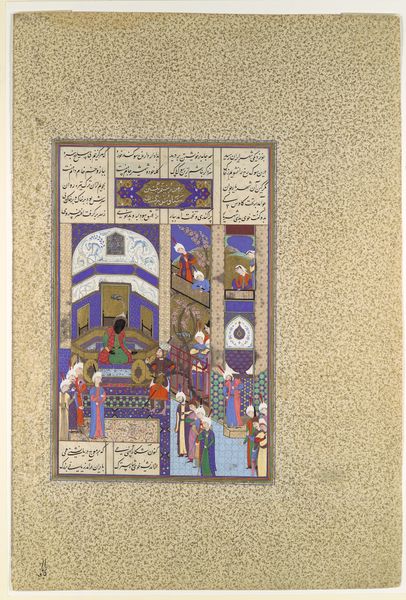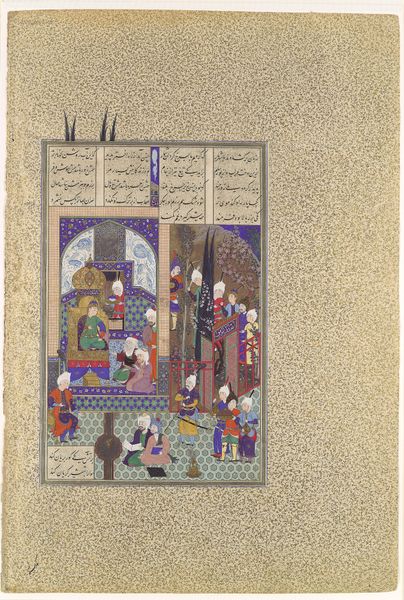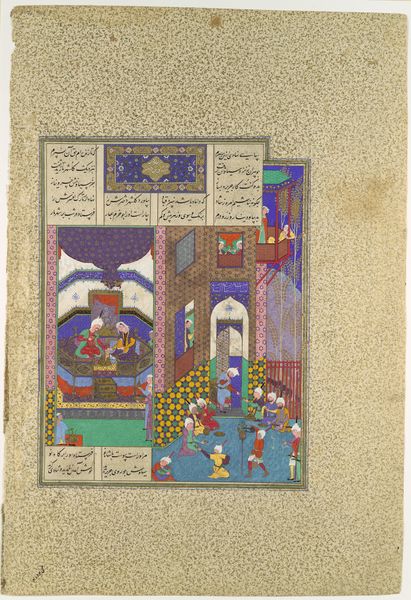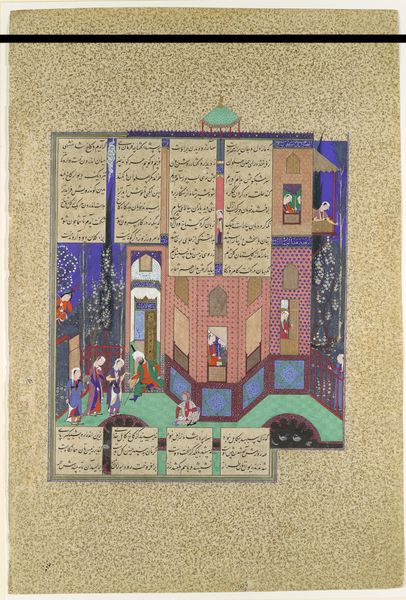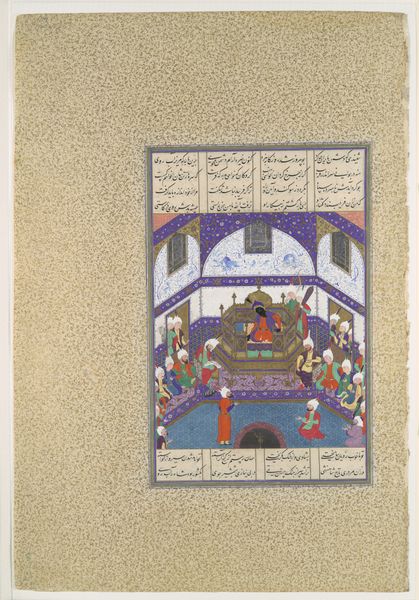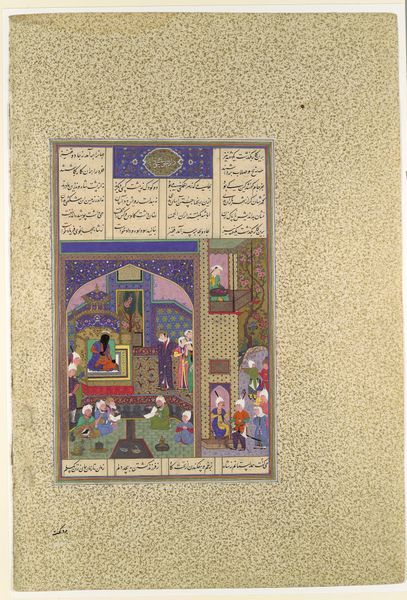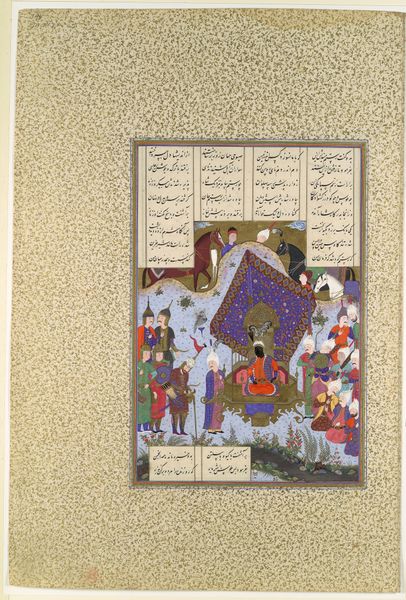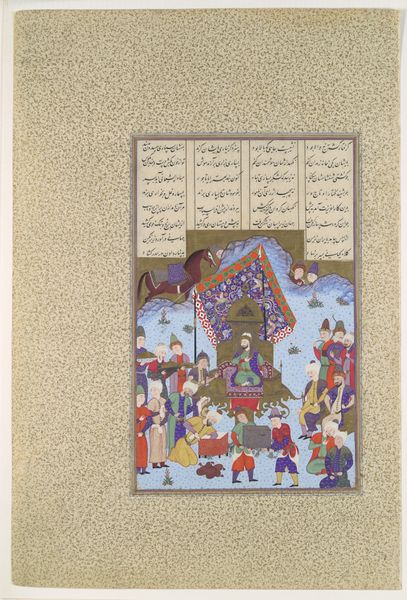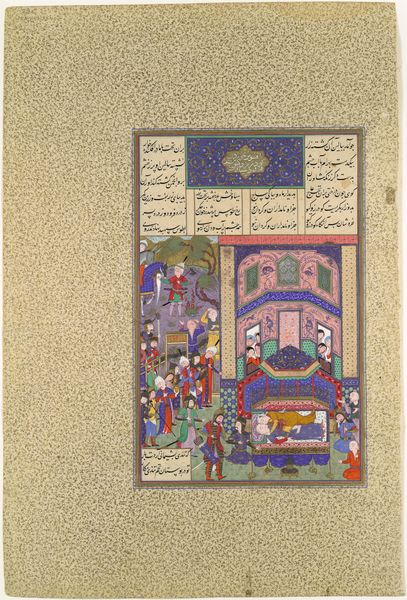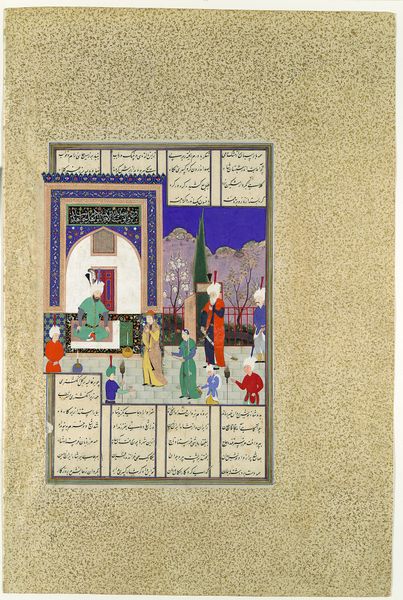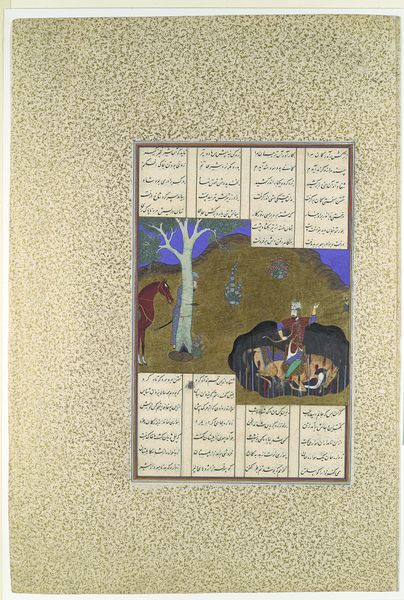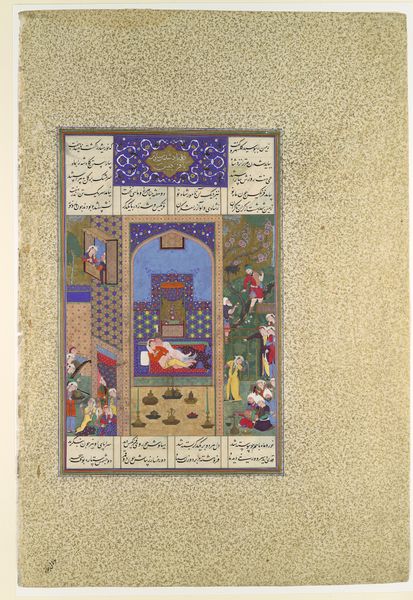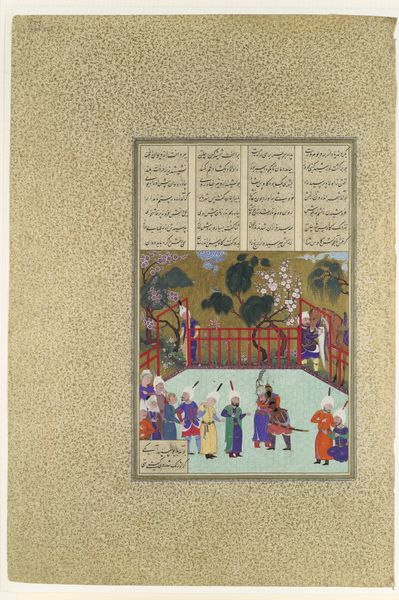
"Siyavush Stands Accused by Sudaba before Kai Kavus", Folio 163v from the Shahnama (Book of Kings) of Shah Tahmasp 1505 - 1560
0:00
0:00
tempera, painting
#
portrait
#
water colours
#
narrative-art
#
tempera
#
painting
#
asian-art
#
figuration
#
men
#
islamic-art
#
miniature
Dimensions: Painting: H. 11 in. (27.9 cm) W. 7 3/8 in. (18.7 cm) Entire Page: H. 18 5/8 in. (47.3 cm) W. 12 5/8 in. (32.1 cm)
Copyright: Public Domain
Curator: Ah, yes. Here we have "Siyavush Stands Accused by Sudaba before Kai Kavus," a page from the Shahnama, painted between 1505 and 1560. It’s done in tempera and watercolors. Editor: It feels very theatrical. Like a play set within a meticulously crafted dollhouse. The colors are vibrant, and it’s incredible how much detail is packed into such a small space. What story can you tell us about the materials used to produce such intricacies? Curator: Well, tempera and watercolor are both quite common for manuscript illumination. However, consider the sources of these materials – the lapis lazuli for the blues, the ochres and minerals for the reds and yellows. Sourcing and processing these materials would involve a network of trade and skilled artisans. Can you see how the value of those colours reflects in the presentation of the rulers within the image? Editor: I do. The King and Queen are adorned with lavish embellishments that demonstrate material wealth. Curator: Precisely. Notice also how the textile patterns on the floor and clothing are rendered with such precision. This level of detail wasn’t just about aesthetics; it reflects the economic importance of textile production at the time. The act of painting wasn’t separate from the economics surrounding it, nor from the value and labour instilled in clothing production. Editor: So, you're saying the painting isn’t just a depiction of a royal court, but also a record of the era's economic structures and values regarding textiles and craftmanship. Curator: Absolutely! These miniatures, commissioned by elites, reflect their material concerns and the means of production that sustained their status. Each pigment, each textile rendered in paint, speaks to the labor and resources required to maintain their power. Editor: I’m now considering these colours not just as shades, but as evidence of trade routes, labour systems, and royal power structures. Thank you for opening my eyes to the production involved in creating this art. Curator: And thank you for drawing the economic status from what one would naturally call beauty.
Comments
No comments
Be the first to comment and join the conversation on the ultimate creative platform.
